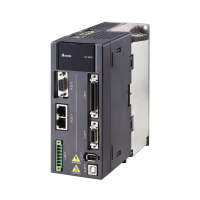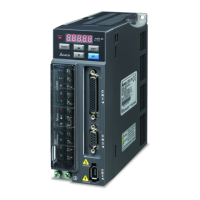Chapter 4 Instruction Structure
4-3
operands.
Every applied instruction has its own API number and instruction code. For example, the instruction
code of API0300 is MOV (transferring the data).
Entering the instruction directly: Users can enter the instruction by means of ISPSoft. For the
instruction MOV, users only need to enter the instruction name and
the operands to designate “MOV D0 D1”.
Entering the instruction by dragging: Users can drag the instruction MOV from APIs in ISPSoft to
the area where the ladder diagram can be edited.
Entering the instruction by the toolbar: Users can click API/FB Selection on the toolbar in ISPSoft,
and then choose API. Finally, they can choose the
instruction MOV in Data Transfer. The operands are extra
designated.
S
If there is more than one source operand, these source operands are represented by S
1
,
S
2
, and etc.
D
If there is more than one destination operand, these destination operand is represented
by D
, D
, and etc.
If the operand only can designate the constant K/H or the register, it is represented by m, m
1
2
n, n
1
, or n
2
.
The length of the operand (the 16-bit instruction, the 32-bit instruction, or the floating-point
number instruction):
The 16-bit instruction or the 32-bit instruction
The values of the operands can be divided into the 16-bit values and the 32-bit values. Accordingly,
in order to process data of difference lengths, the instructions are divided into the 16-bit instructions
and the 32-bit instructions. To separate the 32-bit instruction from the 16-bit one, a D is added in
front of the 16-bit instruction.
When M1 is ON, the data in
D0 is transferred to D1.
32-bit instruction DMOV
When M1 is ON, the data in
(D1, D0) is transferred to (D3,
D2).
The floating-point number instruction
The floating-point number instructions can be divided into the 32-bit floating-point number
instructions and the 64-bit floating-point number instructions, which correspond to the
single-precision floating-point number instructions and the double-precision floating-point number
instructions respectively. Users can refer to chapter 2 for more information about the floating-point
numbers.

